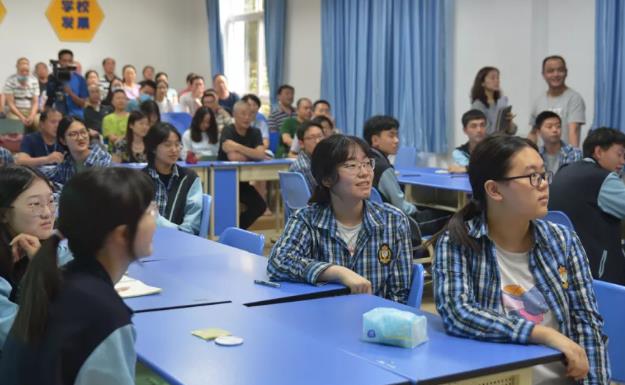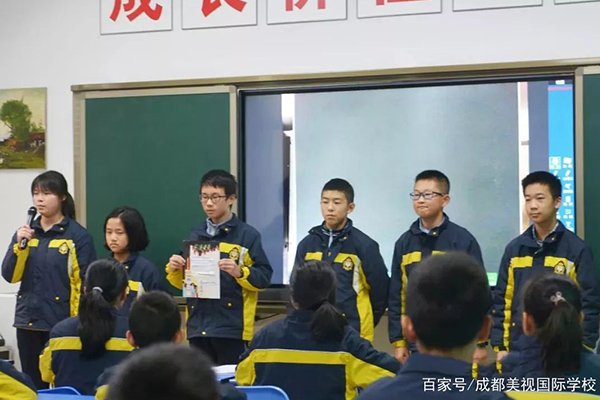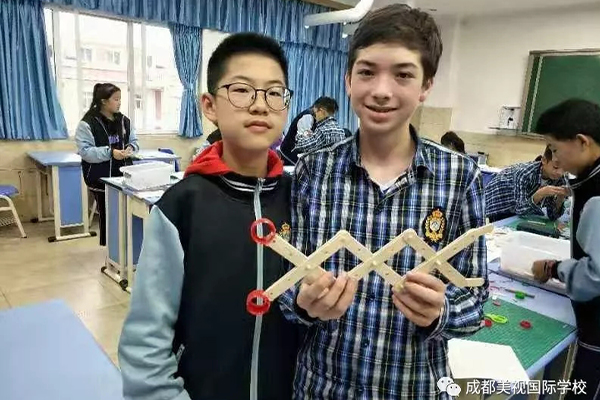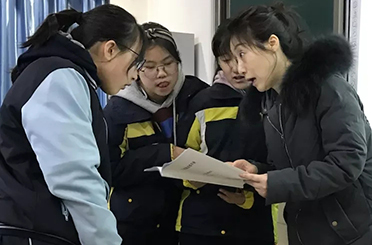A Comparative Study of Situational Language Teaching and Communicative Language Teaching
谭俊 (成都美视学校 610024)
Abstract:
Language teaching methods are changing with the recognition of changes in the field of proficiency learners need. This paper tends to compare the Situational Language Teaching and the Communicative Language Teaching and analyses the merits and the drawbacks.
key words :
situational language teaching communicating language teaching
I. Introduction
The teaching of foreign languages has evolved for many centuries. Different teaching approaches and methods have been developed by linguists and language teachers, especially in the twentieth century. Chinese foreign language teachers and linguists also developed and introduced some teaching approaches to the teaching of English in China. Among the teaching methods practiced in China, Situational Language Teaching (SLT) and Communicative Language Teaching (CLT) are given most consideration .Teachers of foreign languages in China have realized the drawbacks of old teaching method and are eager to find a better substitute, but we should also be aware that new methods and approaches still have limitations. We should adapt new teaching approaches creatively to fit into our own teaching practices. The paper mainly tend to find the advantages and disadvantages of the two approaches and concern the proper application of the above two approaches in language teaching practices.
2. Brief introduction of SLT and CLT
Richards and Rodgers give a best summary of teaching approaches in their book Approaches and Methods in Language Teaching. A brief summary is as follows:
2.1. Situational language teaching
“when we acquire our primary language, we do so by learning how to behave in situations, not by learning rules about what to say” (M.A.K. Halliday et al. 1964:179)
The situational language teaching approach just follows this rule. Situational language teaching was originally called oral approach, which was developed by British applied linguists in the 1920s and it has provided guidance to many well-known EFL/ESL textbooks and courses. In fact, most books on business English are compiled according to this approach too.
The theory of learning underlying Situation Language Teaching is behaviorism, addressing more the processes rather than the conditions of learning.
Richards and Rodgers summarized the main characteristics of the approach as follows:
1). Language teaching begins with the spoken language. Material is taught orally before it is presented in written form.
2). The target language is the language of the classroom.
3). New language points are introduced and practiced situationally.
4). Vocabulary selection procedures are followed to ensure that an essential general service vocabulary is covered.
5). Items of grammar are graded following the principle that simple forms should be taught before complex ones.
6). Reading and writing are introduced once a sufficient lexical and grammatical basis is established.
Situational Language teaching uses a structural syllabus and a word list. Structures are always taught within sentences, and vocabulary is chosen according to how well it enables sentence patterns to be taught. The practice techniques employed generally consist of guided repetition and substitution activities, including chorus repetition, dictation, drills, and controlled oral-based reading and writing tasks.
Since the purpose of teaching a foreign language is to enable the learners to use it, then it must be heard, spoken, read, and written in suitable situations. The situational language teaching focused on the need to practise language in meaningful situation-based activities.
2.2. Communicative language teaching
Communicative Language Teaching makes use of real-life situations that necessitate communication. The teacher sets up a situation that students are likely to encounter in real life. The real-life simulations change from day to day. Students' motivation to learn comes from their desire to communicate in meaningful ways about meaningful topics. Wilkins, a British linguist proposed a communicative definition of language serves as a basis for developing communicative syllabuses for language teaching. Instead of describing the core of language through traditional concepts of grammar and vocabulary, Wilkins demonstrated the systems of meanings that lay behind the communicative uses of language. The functional view of language is the primary one behind the communicative method. The goal of language teaching is to develop communicative competence, which involves being able to use the language appropriately .
Teachers in communicative classrooms will find themselves talking less and listening more. The teacher has two main roles: the first role is to facilitate the communicative process between all participants in the classroom, and between the various activities. The second role is to act as an independent participant within the language-teaching group. The teachers set up the exercise, but the students' performance is the goal. So, the teachers must stand there and observe the students, sometimes acting as a monitor. A classroom during a communicative activity is not quiet. The students do most of the speaking, and the classroom during a communicative exercise is active. To participate, students may find they gain confidence in using the target language. Students are more responsible mangers of their own learning.
Communicative language teaching therefore seeks to bring learners into closer contact with real language together with the promotion of fluency over accuracy.
3 . Comparison of the advantages and disadvantages of SLT &CLT
Comparatively, situational approach is more systematic and more fully developed. There are series of textbooks that are used to teach all kinds of language contents to students from the very primary level to advanced level. However, communicative approaches are interpreted in different ways by different linguists and teachers, and have no fixed syllabus model or procedure.
Using situational approach, a teacher can systematically teach students graded vocabulary and grammar by putting them into concrete situations, which facilitates the students in learning the language knowledge by heart. For example, the teacher may teach the word “punctual” by telling the students an interesting story of what happened when someone was late for an appointment. Students are not likely to lose their interest in learning grammar and vocabulary as it happens in the Grammar-Translation Method when the teacher just makes up some unrelated sentences using this word, but the students may lack the practice of applying what they have learned into real communicative situations because the teacher is, for most of the time, the center of the class. So they maybe lose the chance to communicate in the real “situation”. Communicative approach focuses on the communicative competence, using real-life communication in the target language between students to help the students learn the usage of words and grammar. The learners spend all the time in English and the activities require them to speak and listen to English from the first day, not only writing and reading. For example, the teacher may manage a discussion on the topic why we should learn a foreign language. In this discussion, students may encounter the subjunctive mood as in the sentence “If I hadn’t learned English, I would not have been able to tell the foreigner the way to the station.” In a communicative class, students may have more chances to put the target language into practice, but they are more likely to make mistakes since the primary goal is to achieve fluency instead of accuracy. Students may also get confused at some grammar points because grammar is not the focus of this approach.
In summary, As for the Situational Language Teaching, it also makes meaning cleaner and easier to understand because new items are presented in situations .and it is also due to this feature that teachers found it very difficult to present all the items in appropriate situations, and this form an extra burden for teachers. As for communicative language teaching, since communication is a process, it is insufficient for students to simply have knowledge of the target language form, meanings and functions. Students must be able to apply this knowledge in negotiating meaning .It is through this interaction between speaker and listener that meaning becomes clear. one of the basic assumptions of the communicative language teaching is that students will be more motivated to study a foreign language if they feel they are learning to do something useful with the language they study.
Therefore, we can conclude that situational approach is better to be used to teach grammar and vocabulary as a supplement or improvement to the Grammar-Translation Method, while communicative approach should be followed in teaching oral English when the students have grasped the system of basic grammar points. Each coin has two sides , we should adopt the teaching approach in different situations and sometimes we can integrate several teaching approach if possible.
The teacher shall not play the dominant role in the oral English class as CLT requires, but give instructions and corrections while leaving enough time for creative and effective activities in which students are willing to speak English as much as possible. In fact, communicating with partners in English involves both listening and speaking and can help English learners improve English unconsciously. Grammar is not emphasized but some important grammatical points can be reviewed if the teacher consciously creates situations that require the use of a certain grammar point. For example, ask the students to improvise a regret for not having done something and apologize to the supervisor using subjunctive mood. Students will gradually learn to monitor their uttering with grammar they learned and make fewer mistakes in the future.
When the students have acquired certain communicative competence, new knowledge shall be introduced using Situational Language Teaching Approach. When introducing new words or phrases, the teacher shall put them in concrete situations, and ask students to use these words in classroom activities. The teacher may first introduce some new words, expressions and background information every class, and then ask students in each group to fulfill a different task each class, such as holding a press conference for releasing new products, discussing questions and simulating interviews, discussing incentives to employees or solving strikes. Each task shall be of limited difficulty for students in terms of English used. New words and expressions shall be taught and practiced in business situations. The content shall be arranged not only according to difficulty, but also according to topics. Everyday English expressions shall also be incorporated to the project. For example, the task of attending a sales meeting in the U.S. can include situations in the airport and in a hotel. At the beginning of the course, it is urgent to activate students to speak English, but when they have overcome the difficult stage of getting to talk in English, errors shall be corrected so as to help them form the habit of speaking correct English.
4. Conclusion
By creatively adopting CLT and SLT principles and activities, an oral English teacher may be able to solve problems in various teaching situations, such as students’ reluctance to talk in English. However, no one teaching approach is a perfect one that is sufficient enough to be used as the sole basis of teaching, and we must subtract the essence out of each teaching approach and apply it creatively to our own teaching situation. Both SLT and CLT can be used to teach oral English, but we need to compare them, evaluate them and adapt principles that suit to our own teaching situation best. Similar to learning a language, we can find the best teaching method for ourselves only through trial and error. Constantly checking students’ progress and adjusting teaching strategies and methods are necessary when we are applying teaching approaches. Every teacher shall find a best teaching method for himself that will give students most benefits.
References
J.C.Richards, and Theodore, S. Rodgers. (2000). Approaches and Methods in Language Teaching Foreign language Teaching &Research Press ,Cambridge University Press.
H.D.Brown (2002) Principles of Language Learning and Teaching Foreign language Teaching &Research Press
舒白梅(2005)现代外语教育学 上海外语教育出版社
A Comparative Study of Situational Language Teaching
and Communicative Language Teaching
成都美视学校 谭俊
联系方式:Tel:13982160379





















 关注我们
关注我们